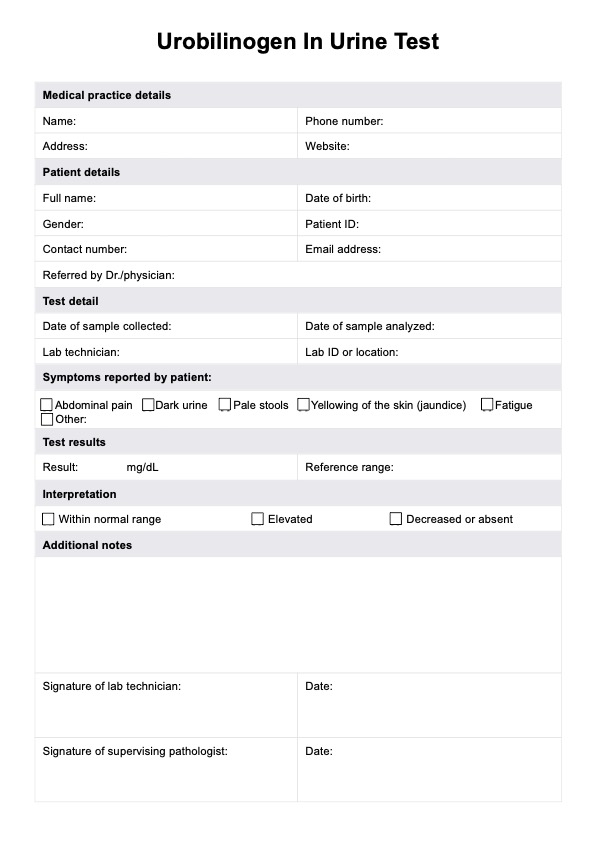Primary care physicians, gastroenterologists, or hematologists often request a Urobilinogen in Urine Test. These specialists use the test to evaluate potential issues related to liver health, biliary disease, or blood disorders.

Urobilinogen In Urine
Learn about the Urobilinogen in Urine Test. Download a free PDF template to use for easy clinical documentation.
Urobilinogen In Urine Template
Commonly asked questions
Urobilinogen Urine Tests are commonly used in cases of suspected liver disease, such as liver dysfunction or biliary obstruction. They may also be requested when hemolytic anemia is suspected, as well as during routine health check-ups to monitor liver enzyme levels and overall liver health.
Urobilinogen in Urine Tests assess urobilinogen levels in a urine sample, helping identify potential health conditions. Elevated urobilinogen may signal liver dysfunction, biliary disease, or other issues affecting liver health. These tests are often used alongside blood and liver enzyme tests to comprehensively evaluate liver function. A urine dipstick test can quickly detect abnormal urobilinogen levels, guiding further diagnostic steps. Combined with blood tests, these assessments provide valuable insights into liver health and help identify conditions such as biliary obstruction or impaired liver function.
EHR and practice management software
Get started for free
*No credit card required
Free
$0/usd
Unlimited clients
Telehealth
1GB of storage
Client portal text
Automated billing and online payments











